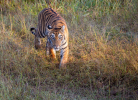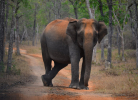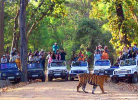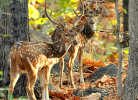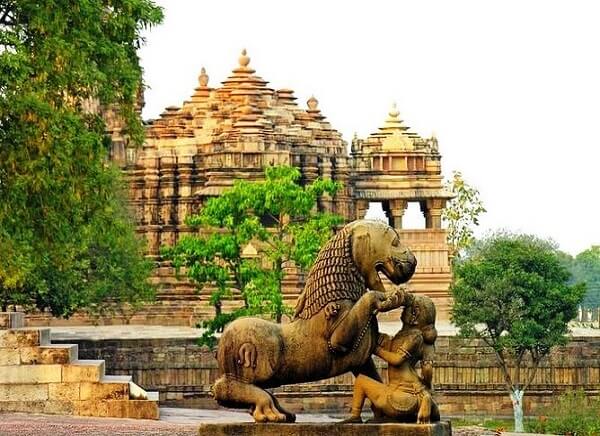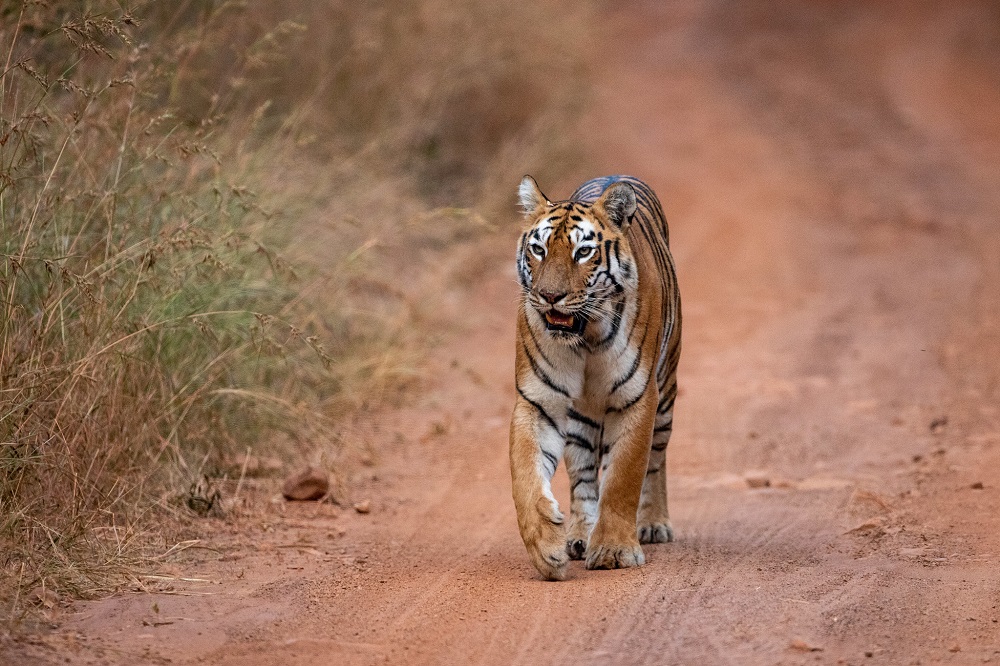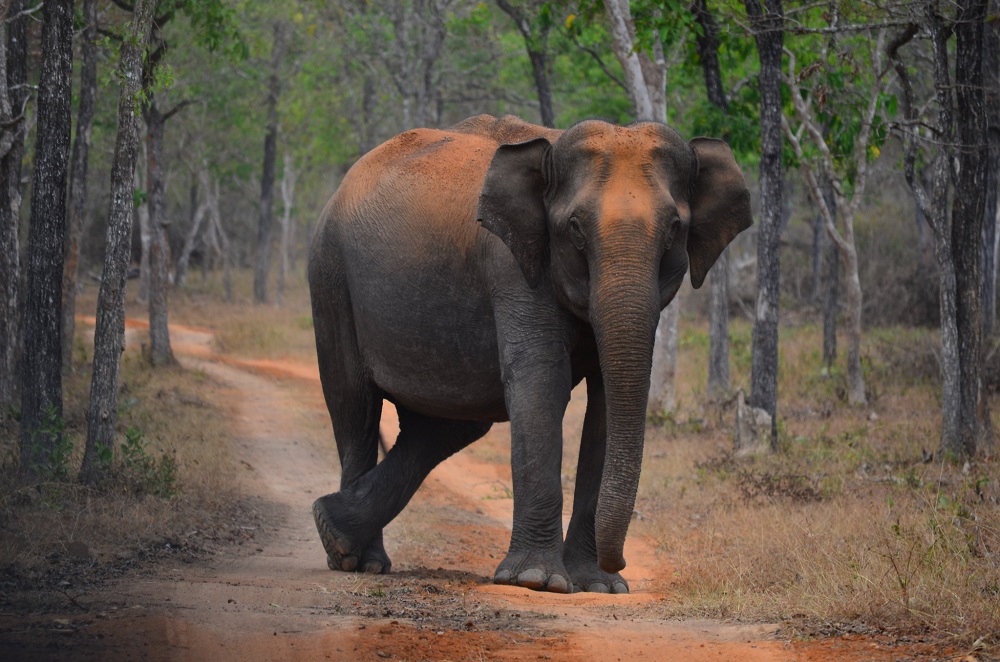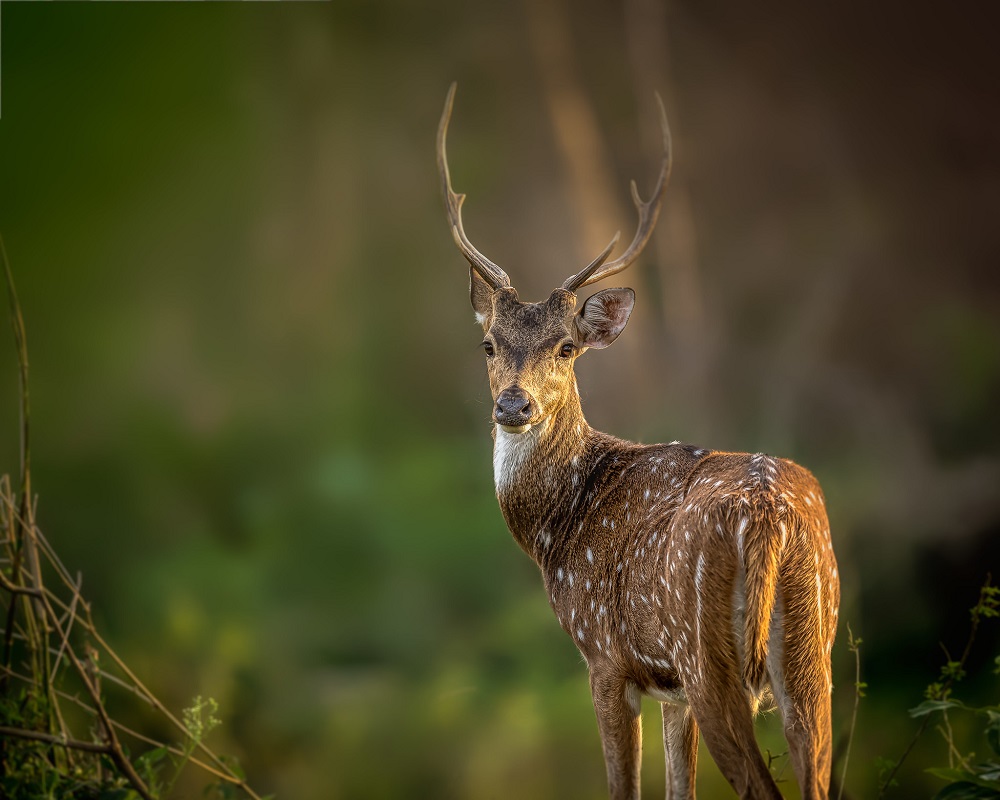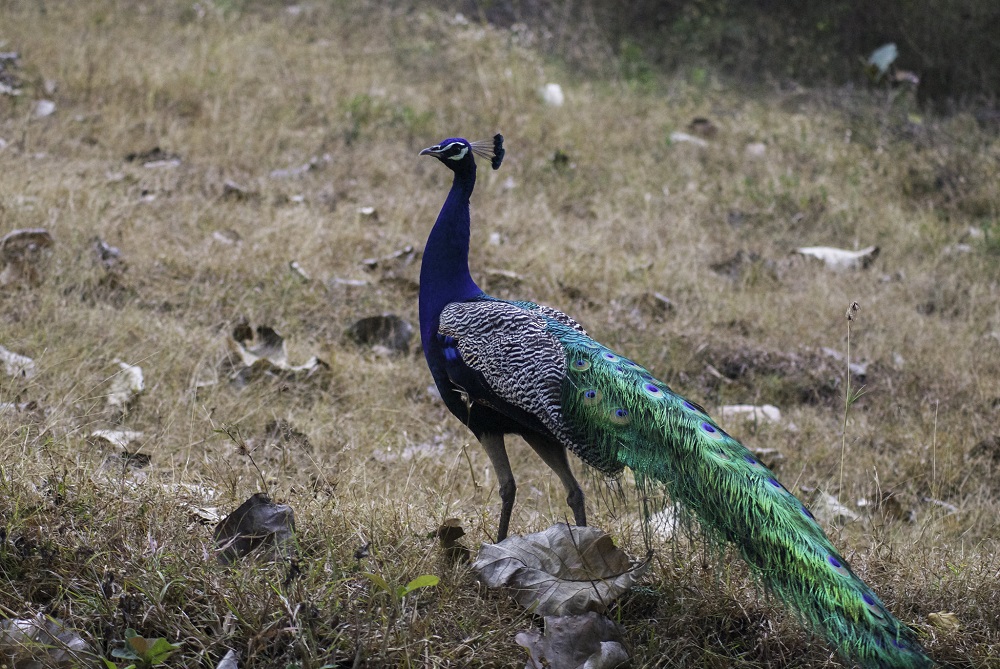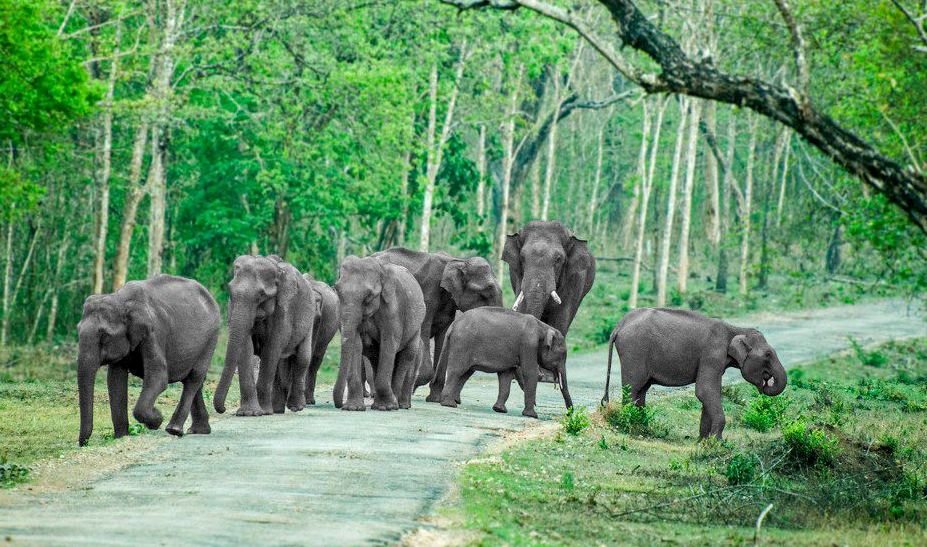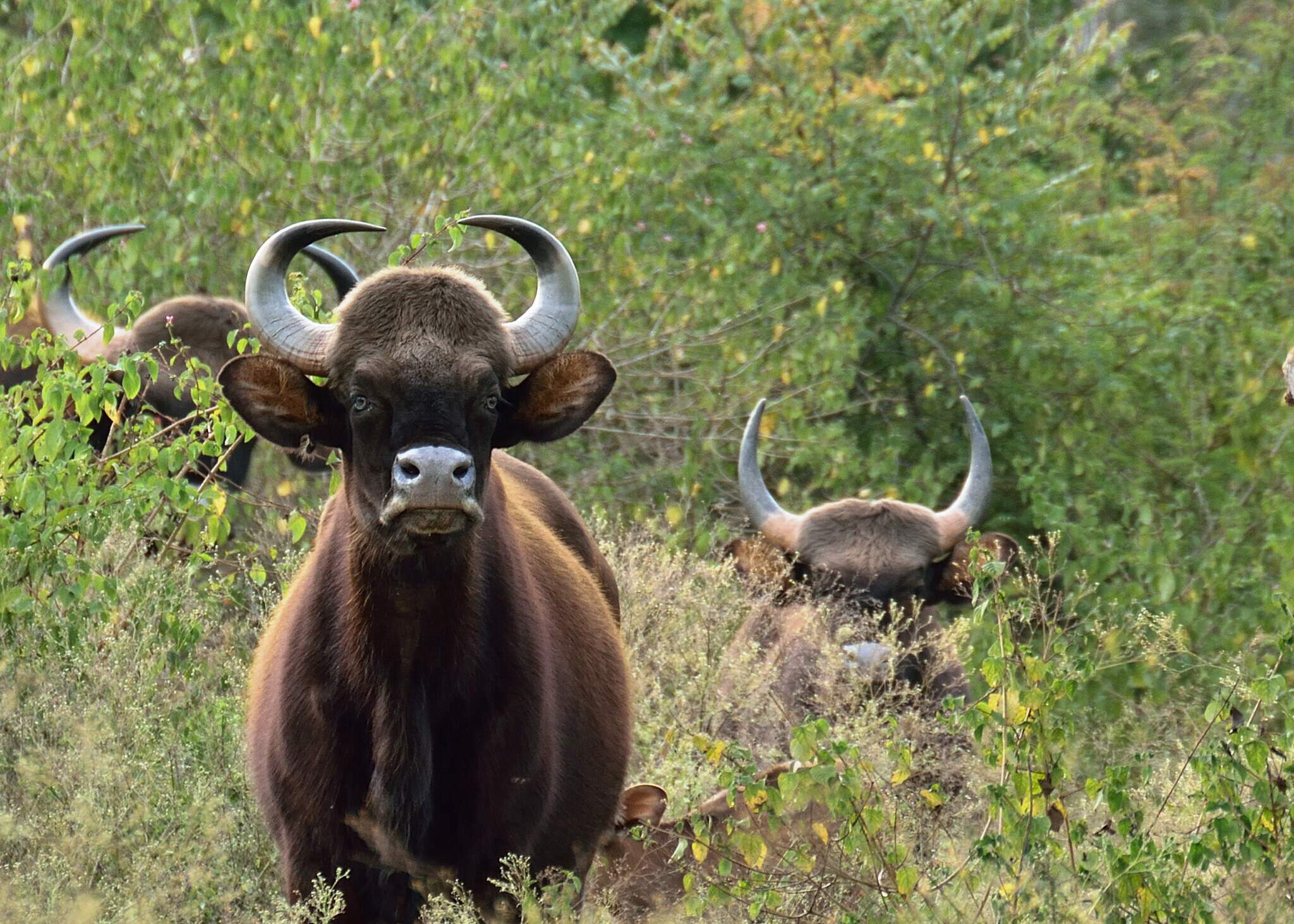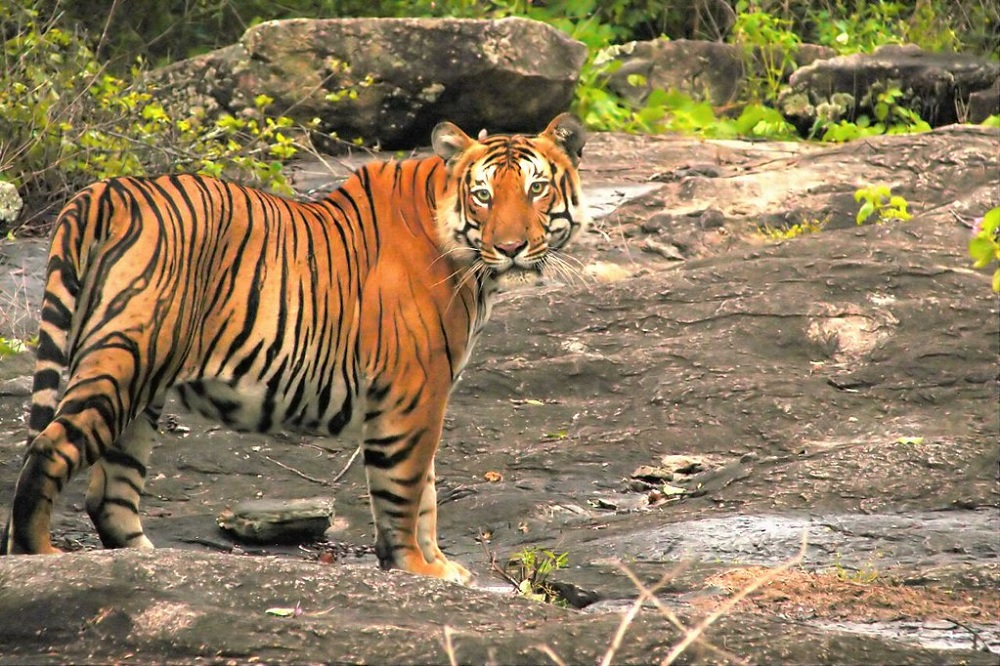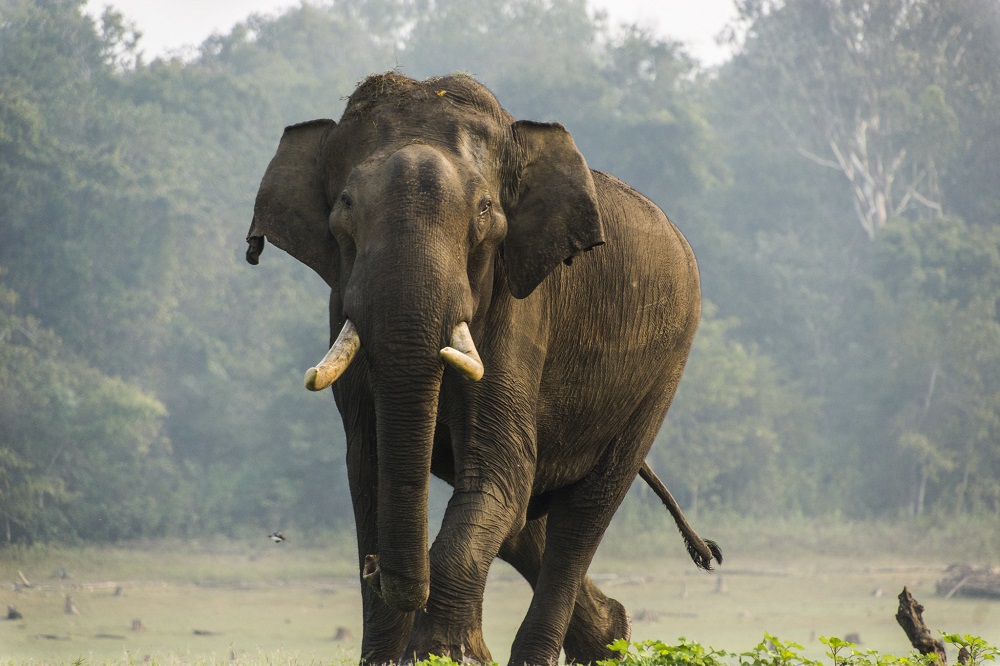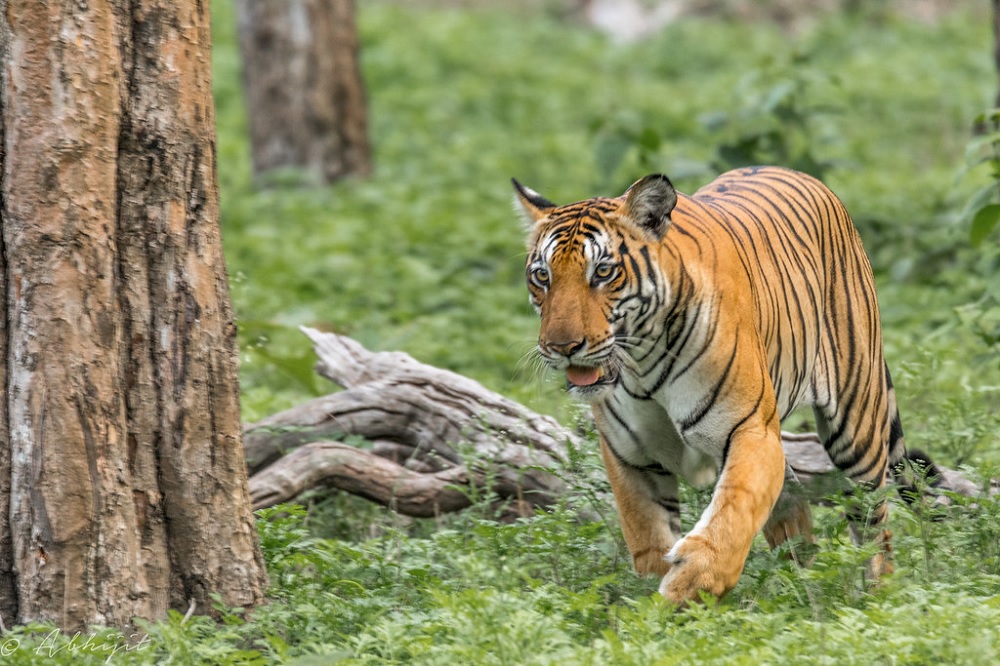Sariska National Park
Situated in the Alwar district of Rajasthan, “Sariska National Park”, is one of the important national parks in Rajasthan. Stretch over an area of 866 sq. kilometres, the park boasts not of variety of flora and fauna but it is famous for ‘Tiger population’ and ‘Tiger Reserve Project’.
Other than flora and fauna, the feature that make Sariska National Park popular among worldwide are the ruins of 11th centuries ‘Garh-Rajor’ temple, 17th-century ‘Kankwari’ fort on the hill which offer a beautiful view of soaring vultures and eagles. Last but not least it’s encircled ‘Siliserh Lake’ and ‘Jai Samand Lake’, which houses varied crocodiles, water snakes and different creatures of land and water is really enticing and treats for many wildlife lovers and photographers.
Flora of Sariska National Park
As greenery can hardly be found in the huge area of desert, “Sariska National Park” is one of the alone forest area in the entire western Aravali hills which is enriched with flora. According to climatic and geographical condition,the flora found in Sariska Wildlife Sanctuary is of dry deciduous type. About 90% of the park covered with ‘Dhok’ tree. Despite this, the park also comprises different kinds of trees named Goria, Surwal, Ber, Tendu, and Khair.
Moreover, the national park has dry and dusty look during the summer season, but with the beginning of monsoon, the look of the park changes greatly and a good bit of greenery can be seen.
Fauna of Sariska National Park
Sariska National Park offers a good opportunity to watch wildlife in their natural habitat. Extent over an area of 800 sq. kilometres, this wonderful park amazed tourists with animals like leopards, sambhar, jungle cats, hyenas, deer, chinkaras, chausinghas, antelopes, wild boars, bison, nilgai, mongoose and porcupine. No doubt tiger population and various reptiles and snakes complete the fauna of the national park.
Except this, if you want to know about the bird species of Sariska National Park, here you will watch over 225 species of birds like grey partridge, sand grouse, crested serpent eagle, woodpecker, horned owl, tree pie, bush quail and many more, that not flapping their wings in the park but around trees and you.
Entry Fee of Sariska National Park
Indians – INR 80/- per person
Foreigners – INR 470/- per person
Video Camera – INR 400/-
Dress : It is advised to wear soft / cotton / casual clothes and comfortable shoes for your wildlife tours.
Hunting : According to Indian Law – Hunting is serious criminal offence, so it’s advised don’t hunt or cause any harm to animals.
Wildlife Safari in Sariska National Park
Two wonderful safaris are available in Sariska National Park named : Jeep Safari and Canter Safari.
Jeep Safari : An approximate on 3 hours, through “Jeep Safari”, a small group of at least 6 people can explore the national park and its wildlife in their natural habitat. A jeep safari is specially suggested for wildlife photographers so that they can capture the perfect picture of royal tiger and other species of animals.
Canter Safari : Next to jeeps, open vans called ‘Canters’ are also available for safari. If you are traveling in a group more than 6 people then it is best to be together in a canter. It allows 20 people at a time and travels in all zones.
Note : It is advisable to book your ticket earlier as the demand for Safari will be very high, especially during tourism season.
Wildlife Safari Timings
In Sariska National Park, safaris take place in two times, Morning and Evening. The timings of safari for both the slots are given below:
- Morning Safari : 6 AM to 10 AM
- Evening Safari : 2 PM to 6 PM
Note: For any unforeseen calamities like fire, earthquake or climatic condition reason, the safari timings may be varied.
Climate of Sariska National Park
The Climate in Sariska National Park is not specific. Here below, let’s have a look on brief description of weather of various seasons.
Weather Summary
Summer : In Sariska Wildlife Sanctuary the summer months ranges from ‘March to June’. Here March – June are usually recorded very hot and the temperature reaching at a point of 49°Celsius, so those who can tolerate heat, this time is best to view animals.
Monsoon : Sariska Wildlife Sanctuary experiences monsoon from ‘July to September’. As Monsoon is occasional here, at some point of time it receive very heavy rainfall and sometime no rainfall. So mostly the temperature recorded during this time is hot and falls by only a few degrees.
Winter : In Sariska Wildlife Sanctuary the winter months begins from ‘October to February’, the temperature recorded during this time among 15°C to 25°C.
Best Season to Visit Sariska National Park
The best time to visit Sariska National Park is “Winter Season (October to February)”. The dry climate together with cool and pleasant type of climatic conditions makes wildlife tour refreshing, easy-going and enjoying.
How to Reach Sariska National Park
You can reach Sariska National Park by Air, Train and Bus.
Air : The nearest airport to Sariska National Park is ‘Jaipur Sanganer Airport’ situated at a distance of 110 km facilitates easy access by air.
Rail : Alwar Railway Station’ is the nearest railhead to Sariska National Park. The railway station which is situated at a distance of 38 km from Sariska connects all major tourist destinations and important cities of India like Jaipur, Delhi, Kolkata, Indore,Mumbai, Kota and many more by rail.
Bus : Sariska National Park is well connected by road and buses operate by the Rajasthan State Road Transport Corporation (RSRTC) and other private operators in the area and to all the cities of the state and the country.
Distance between major cities and Sariska National Park
- Jaipur to Sariska National Park - 110 Km (Approx. 2 Hours)
- Bharatpur to Sariska National Park - 124 Km (Approx. 2 Hours 38 Minutes)
- Agra to Sariska National Park - 179 Km (Approx. 3 Hours 36 Minutes)
- Delhi to Sariska National Park - 206 Km (Approx. 4 Hours 26 Minutes)
- Udaipur to Sariska National Park - 388 Km (Approx. 6 Hours 10 Minutes)
- Ahmedabad to Sariska National Park - 507 Km (Approx. 8 Hours 39 Minutes)
- Mumbai to Sariska National Park - 1267 Km (Approx. 20 Hours 25 Minutes)
Best Places to Stay in Sariska
Accommodation is not a big problem in Sariska National Park. Here you will find a good range of stays from luxury resorts to wildlife camps to cheap hotels that not provide convenient stay during wildlife tour but greet his tourists with a warm welcome. Just to help, here below few names of popular lodges, hotels and resorts that suits your taste and pocket.
- The Sariska Palace
- Wildlife Camps
- Sariska Resort
- Sariska Tiger Heaven Resort
- PRIM Resorts
- V Resorts Sariska
- Gulmohar Sariska Resort
- Aamod Resort
History of Sariska National Park
The history of “Sariska National Park” goes back to the period of pre independence. On that time, this area was used as a private hunting destination by the kings or regal persons. After independence, scenario had changed, the kings were taken off their royal power and normal people started hunting wild animals to cleared land for residence and agricultural purposes. For continued shooting and government negligence reason, here not only the number of wild animal reduced greatly but in 1973 the selected Sariska Wildlife Sanctuary was not one of the nine reserves under the project Tiger. Finally in 1979 the Sariska Wildlife Sanctuary was again integrated under the project Tiger. The active implementation of the policies connected with conservation has extremely helped the Sariska Wildlife Sanctuary and make it popular among worldwide.
Though, there are 16 village settlements sheltering 5000 people and 30000 animals within the Sariska Wildlife Sanctuary. No doubt the environmental change is a challenge. Efforts are being attempted to accomplish an ecological balance and issues like stealing, traffic and land settlement.
All in all the History of Sariska Wildlife Sanctuary tells us more than ever to done to do to preserve it.


